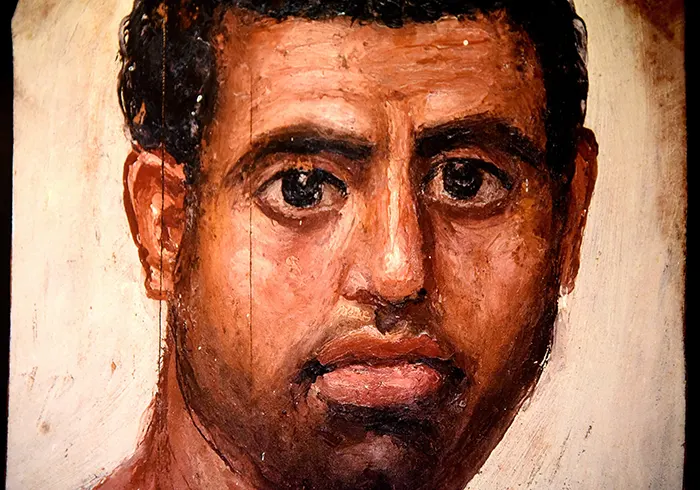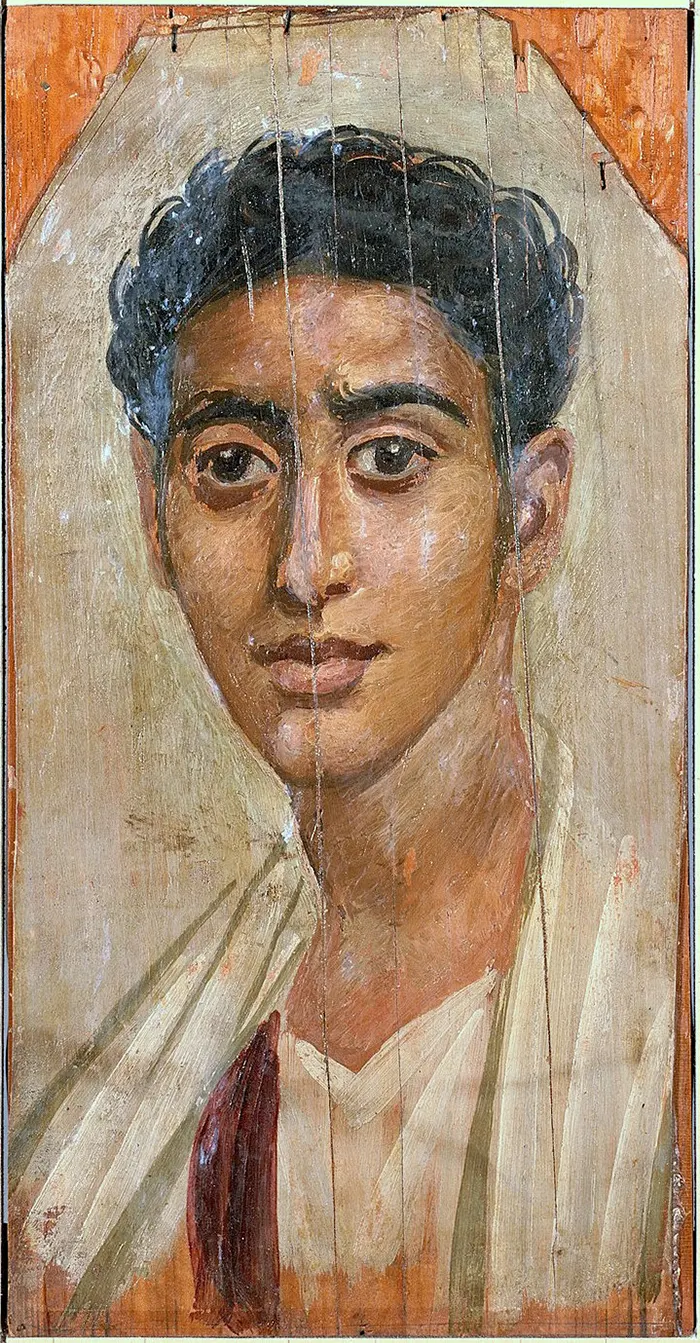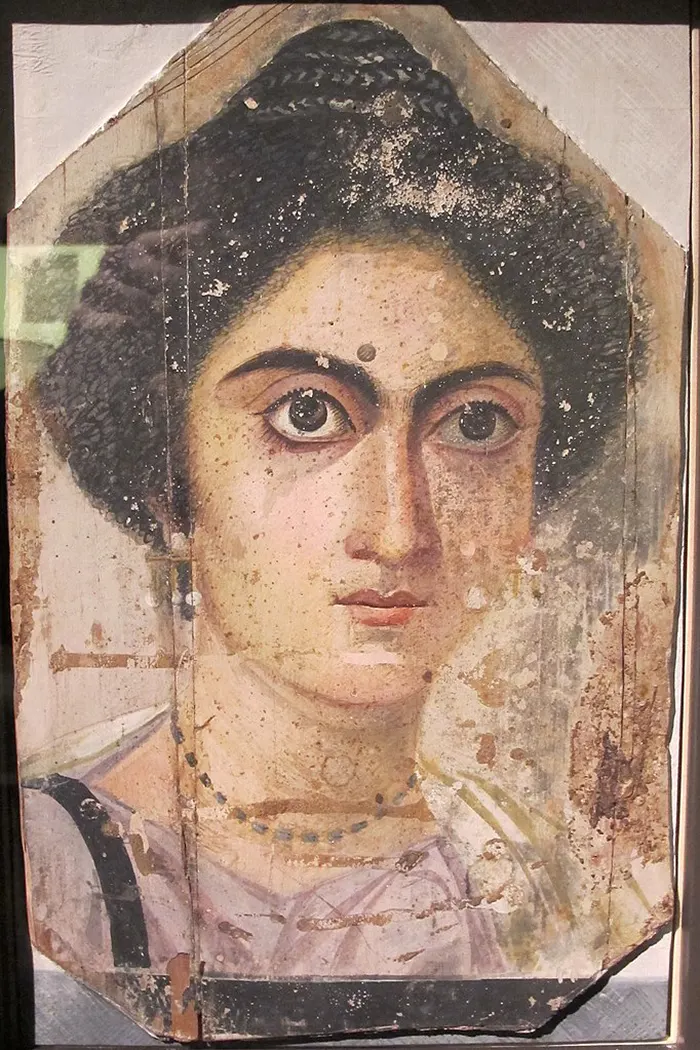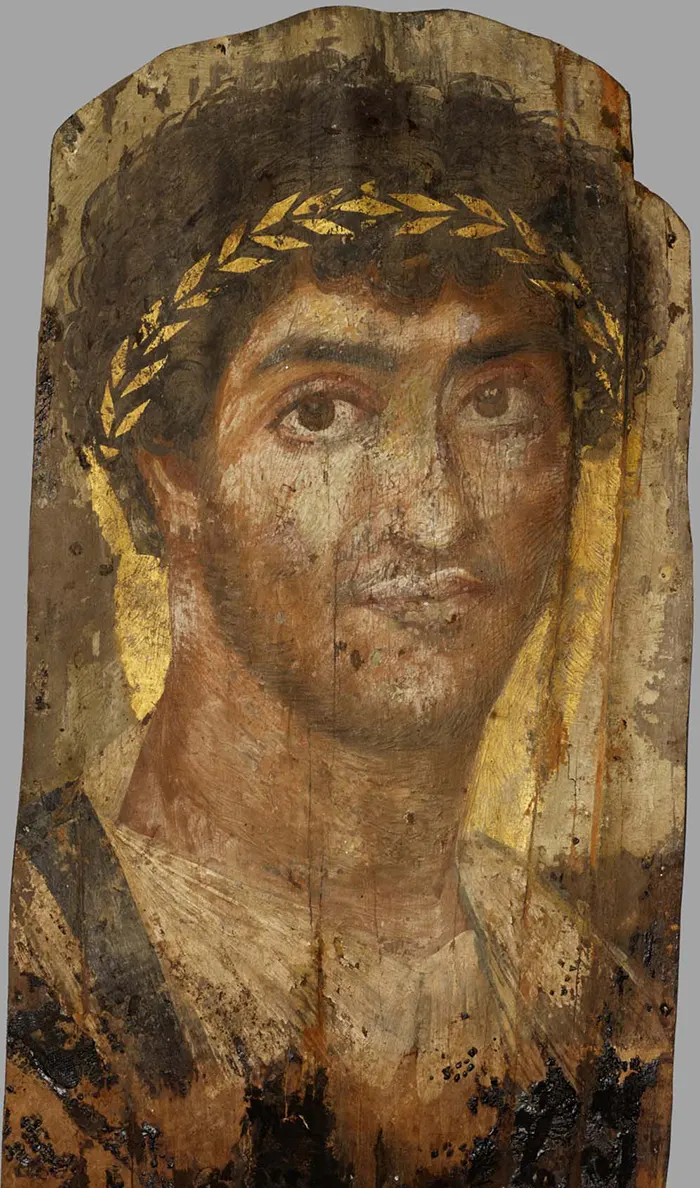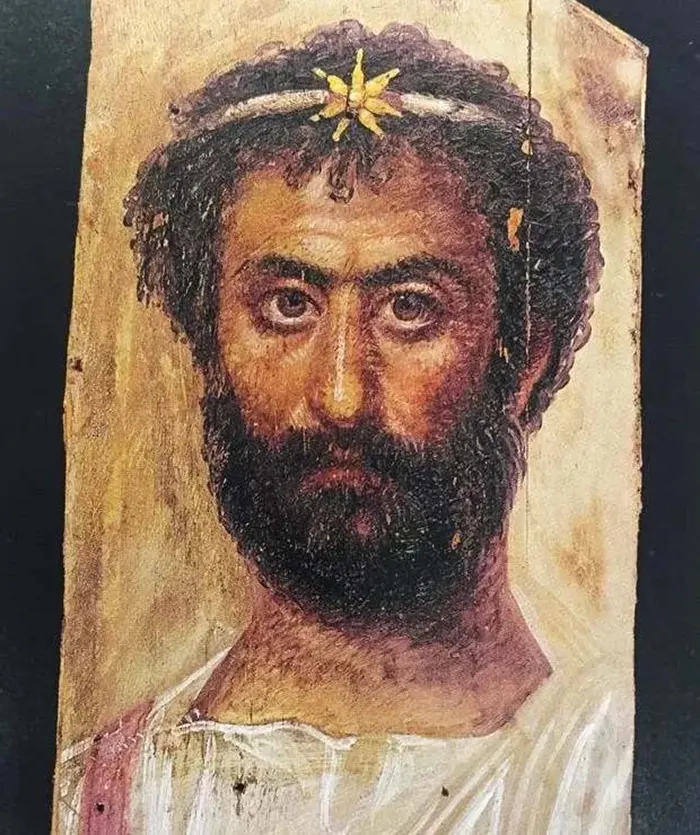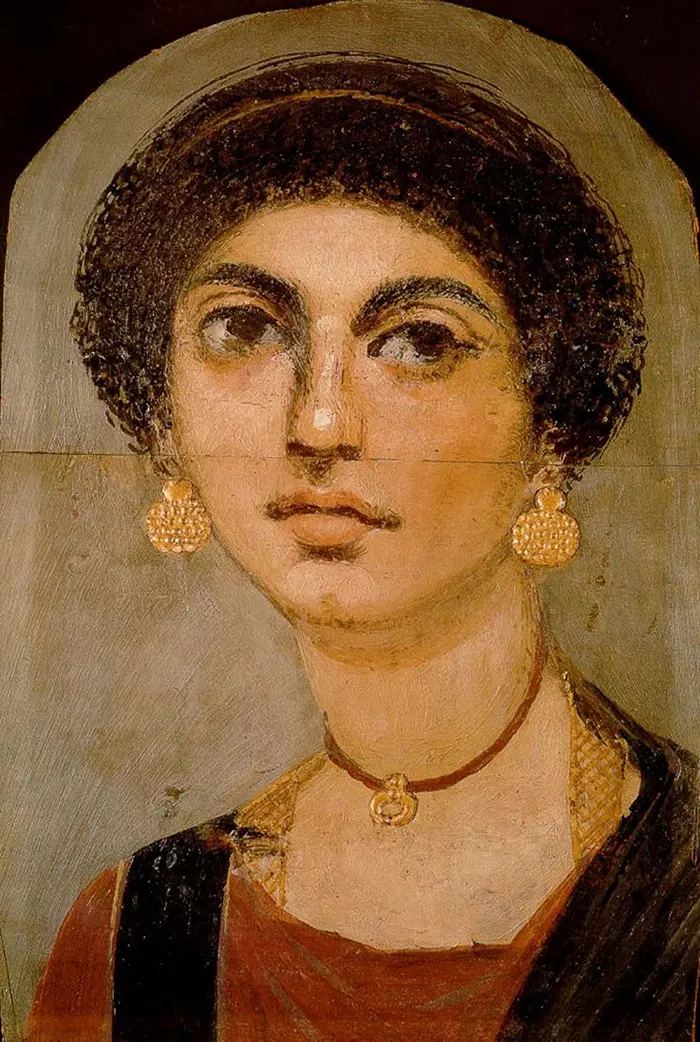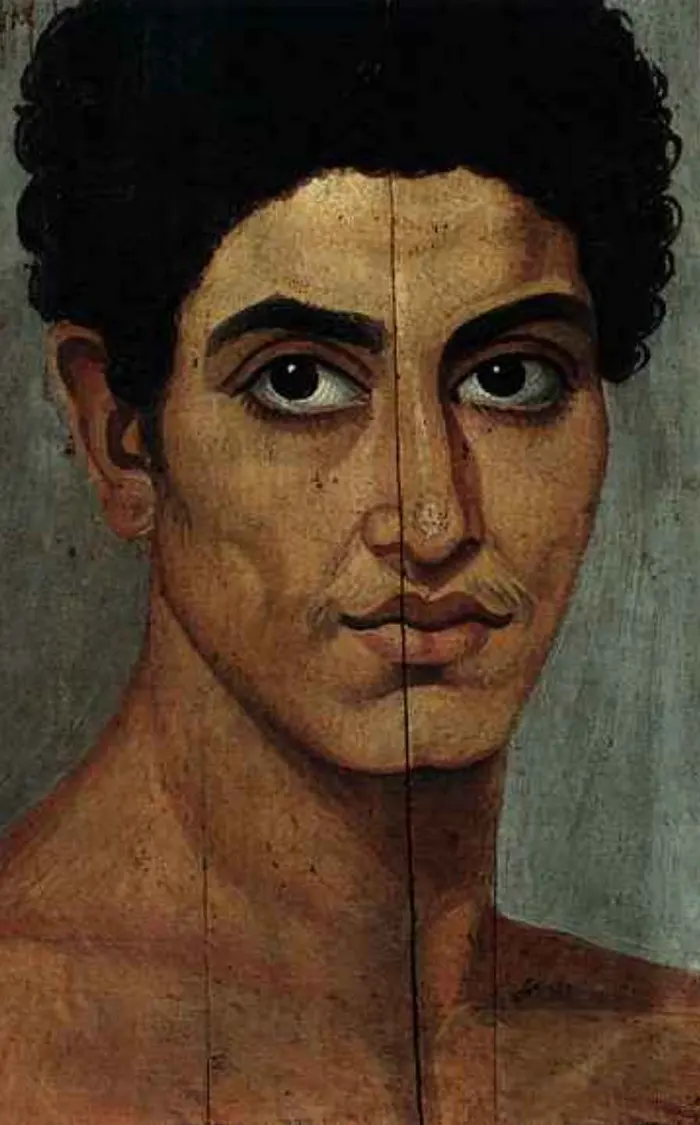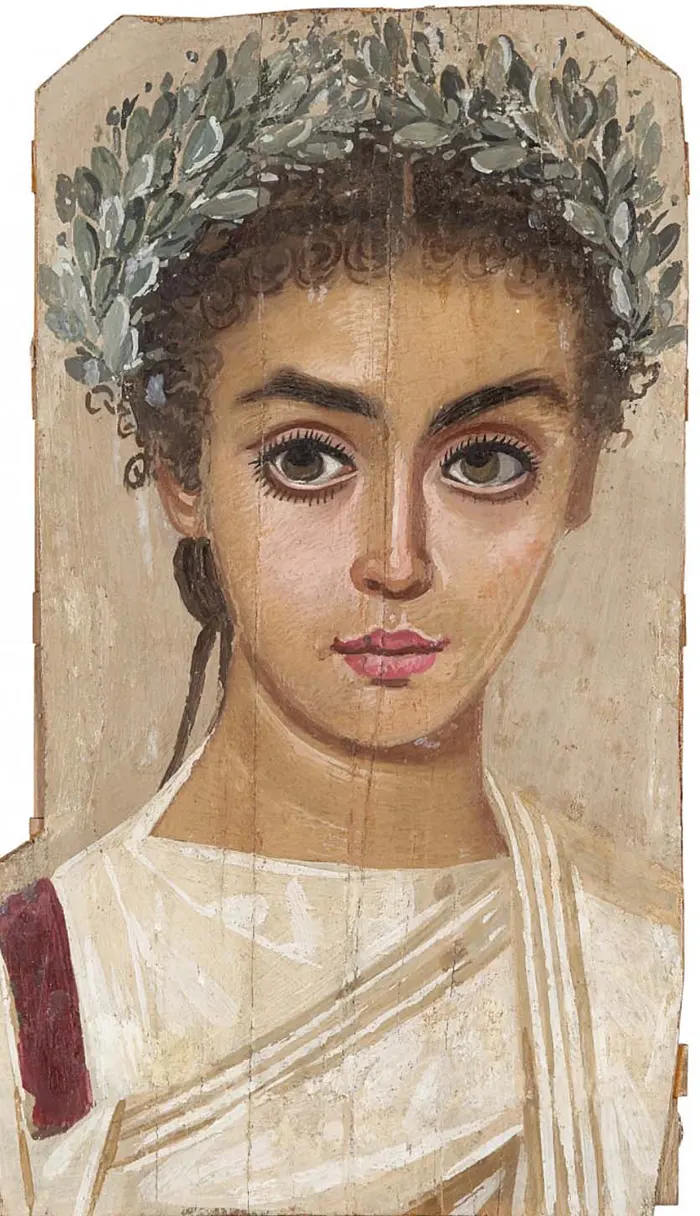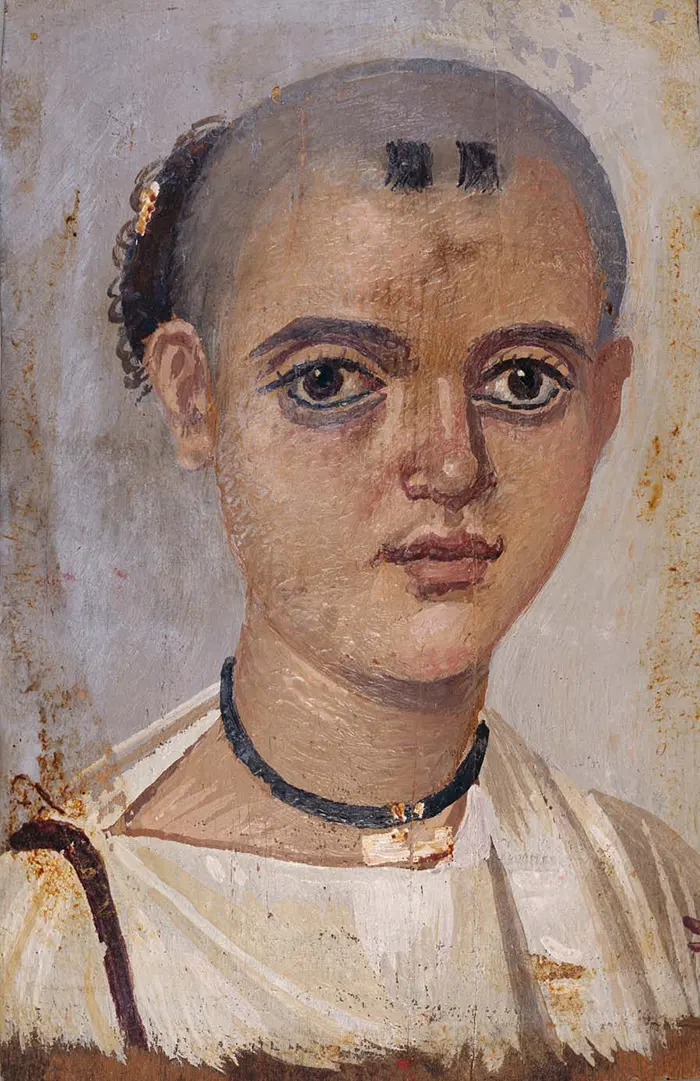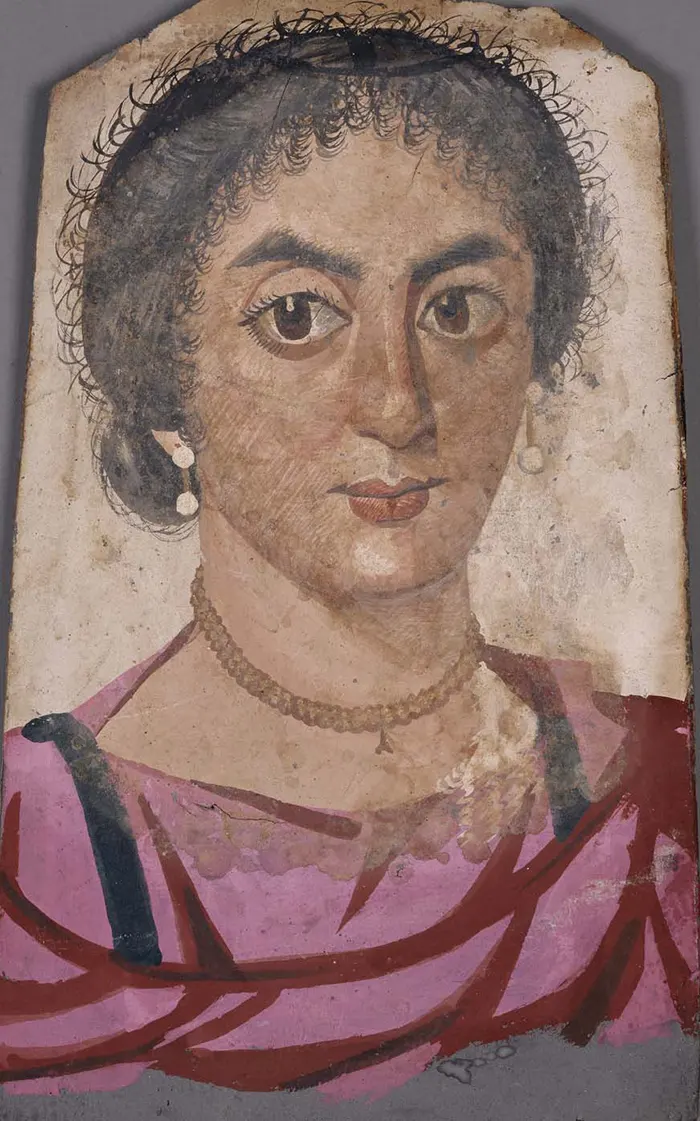“Fayum portraits” is generally used as a stylistic, rather than a geographic, description. While painted cartonnage mummy cases date back to pharaonic times. These ancient Egyptian-Roman “death masks” are far more naturalistic than anything seen in the western hemisphere for at least the next 600 years. There is something profoundly disconcerting about gazing into the face of someone who lived so long ago, and have them look straight back at you – long and level, quizzical – in a way that simulates direct connection. The portraits date to the Imperial Roman era, from the late 1st century BC or the early 1st century AD onwards. It is not clear when their production ended, but recent research suggests the middle of the 3rd century. They are among the largest groups among the very few survivors of the panel painting tradition of the classical world, which continued into Byzantine, Eastern Mediterranean, and Western traditions in the post-classical world, including the local tradition of Coptic iconography in Egypt. The portraits covered the faces of bodies that were mummified for burial. Extant examples indicate that they were mounted into the bands of cloth that were used to wrap the bodies. Almost all have now been detached from the mummies. They usually depict a single person, showing the head, or head and upper chest, viewed frontally. In terms of artistic tradition, the images clearly derive more from Greco-Roman artistic traditions than Egyptian ones. Two groups of portraits can be distinguished by technique: one of encaustic (wax) paintings, the other in tempera. The former are usually of higher quality. About 900 mummy portraits are known at present. The majority were found in the necropolis of Fayum. Due to the hot dry Egyptian climate, the paintings are frequently very well preserved, often retaining their brilliant colors seemingly unfaded by time. Under Greco-Roman rule, Egypt hosted several Greek settlements, mostly concentrated in Alexandria, but also in a few other cities, where Greek settlers lived alongside some seven to ten million native Egyptians, or possibly a total of three to five million for all ethnicities, according to lower estimates. Fayum’s earliest Greek inhabitants were soldier-veterans and cleruchs (elite military officials) who were settled by the Ptolemaic kings on reclaimed lands. Native Egyptians also came to settle in Fayum from all over the country, notably the Nile Delta, Upper Egypt, Oxyrhynchus, and Memphis, to undertake the labor involved in the land reclamation process, as attested by personal names, local cults, and recovered papyri. It is estimated that as much as 30 percent of the population of Fayum was Greek during the Ptolemaic period, with the rest being native Egyptians. By the Roman period, much of the “Greek” population of Fayum was made-up of either Hellenized Egyptians or people of mixed Egyptian-Greek origins. Later, in the Roman Period, many veterans of the Roman army, who, initially at least, were not Egyptian but people from disparate cultural and ethnic backgrounds, settled in the area after the completion of their service, and formed social relations, and intermarried with local populations. While commonly believed to represent Greek settlers in Egypt, the Fayum portraits instead reflect the complex synthesis of the predominant Egyptian culture and that of the elite Greek minority in the city. According to various sources, the early Ptolemaic Greek colonists married local women and adopted Egyptian religious beliefs, and by Roman times, their descendants were viewed as Egyptians by the Roman rulers, despite their own self-perception of being Greek. The portraits represent both descendants of ancient Greek mercenaries, who had fought for Alexander the Great, settled in Egypt, and married local women, as well as native Egyptians who were the majority, many of whom had adopted Greek or Latin names, then seen as ‘status symbols’. A DNA study shows genetic continuity between the Pre-Ptolemaic, Ptolemaic and Roman populations of Egypt, indicating that foreign rule impacted Egypt’s population only to a very limited degree at the genetic level.
Age profile of those depicted
Most of the portraits depict the deceased at a relatively young age, and many show children. According to Susan Walker, C.A.T. scans reveal a correspondence of age and sex between mummy and image. She concludes that the age distribution reflects the low life expectancy at the time. It was often believed that the wax portraits were completed during the life of the individual and displayed in their home, a custom that belonged to the traditions of Greek art. This view is no longer widely held given the evidence suggested by the C.A.T. scans of the Fayum mummies, as well as Roman census returns. In addition, some portraits were painted directly onto the coffin; for example, on a shroud or another part.
Social status
The patrons of the portraits apparently belonged to the affluent upper class of military personnel, civil servants and religious dignitaries. Not everyone could afford a mummy portrait; many mummies were found without one. Flinders Petrie states that only one or two percent of the mummies he excavated were embellished with portraits. The rates for mummy portraits do not survive, but it can be assumed that the material caused higher costs than the labor, since in antiquity, painters were appreciated as craftsmen rather than as artists. The situation in the “Tomb of Aline” is interesting in this regard. It contained four mummies: those of Aline, of two children, and of her husband. Unlike his wife and children, the latter was not equipped with a portrait but with a gilt three-dimensional mask. Perhaps plaster masks were preferred if they could be afforded. Based on literary, archaeological, and genetic studies, it appears that those depicted were native Egyptians, who had adopted the dominant Greco-Roman culture. The name of some of those portrayed are known from inscriptions; they are predominantly Greek. Hairstyles and clothing are always influenced by Roman fashion. Women and children are often depicted wearing valuable ornaments and fine garments, men often wearing specific and elaborate outfits. Greek inscriptions of names are relatively common, sometimes they include professions. It is not known whether such inscriptions always reflect reality, or whether they may state ideal conditions or aspirations rather than true conditions. One single inscription is known to definitely indicate the deceased’s profession (a shipowner) correctly. The mummy of a woman named Hermione also included the term grammatike (γραμματική). For a long time, it was assumed that this indicated that she was a teacher by profession (for this reason, Flinders Petrie donated the portrait to Girton College, Cambridge, the first residential college for women in Britain), but today, it is assumed that the term indicates her level of education . Some portraits of men show sword belts or even pommels, suggesting that they were members of the Roman military.
(Photo credit: Wikimedia Commons / Wiki Art / Library of Congress). Notify me of new posts by email.
Δ Subscribe



